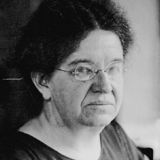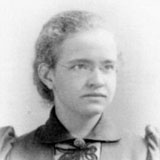Biography: Dr. Florence Rena Sabin

Year: 1924
Achievement: Dr. Florence Sabin was the first woman to be elected president of the American Association of Anatomists.
Year: 1925
Achievement: Dr. Florence Sabin was the first woman elected to membership of the National Academy of Sciences.
Year: 1902
Achievement: Dr. Florence Sabin was the first woman appointed to the faculty of the Johns Hopkins University School of Medicine.
Florence Rena Sabin was one of the first women physicians to build a career as a research scientist. She was the first woman on the faculty at Johns Hopkins University School of Medicine, building an impressive reputation for her work in embryology and histology (the study of tissues). She also overturned the traditional explanation of the development of the lymphatic system by proving that it developed from the veins in the embryo and grew out into tissues, and not the other way around.
Florence Sabin was born in Central City, Colorado, and grew up in Denver, Chicago, and Vermont. She and her sister Mary were raised in part by their uncle and grandparents after their mother died in childbirth in 1877. The family was supportive of education for girls and women, so the sisters received a good secondary education, and both attended Smith College.
Sabin's talent for science was evident when she was still in high school, and when she realized that she was a good but not brilliant pianist, she turned to science fulltime. In 1893, the same year Sabin graduated from Smith, the Johns Hopkins School of Medicine admitted its first class of students including several women. Encouraged by the college physician, Dr. Grace Preston, Florence Sabin wanted to study medicine there, but her family couldn't afford to send her. To earn her medical school tuition, she taught mathematics at a Denver secondary school for two years, and taught zoology at Smith College for a year. She entered Johns Hopkins in 1896, one of fourteen women in a class of forty-five.
In 1900, Sabin and her classmate Dorothy Reed Mendenhall won a prestigious internship to study with William Osler, physician and medical historian, but Sabin, like Mendenhall, found the school's atmosphere very distracting and unsettling for women. Both wondered if they were studying for the right career, Sabin writing to her sister that year that "I don't seem to work well under pressure. I need a calm and placid atmosphere...I never get time to do research."
Moving away from clinical medicine, Sabin had already earned a reputation for her laboratory work, and professor Franklin P. Mall was delighted to help nurture her research career. She published "On the Anatomical relations of the Nuclei of Reception of the Cochlear and Vestibular Nerves," her first medical paper, when she was still a medical student. In 1901 she was awarded a fellowship to work with Mall in the Department of Anatomy, and published An Atlas of the Medulla and Midbrain, which quickly became a standard text in the field.
Although Sabin had clearly shown her skill and affinity for anatomical research, the university was still unwilling to hire a woman on the faculty, and so she relied upon funding from a group supporting women researchers. The papers she published under this fellowship again showed her exceptional skill, and in 1903 she was the first woman to serve as a faculty member at Johns Hopkins. In 1905 she became associate professor. In 1917, when Mall died, Sabin had been teaching and publishing at Hopkins for sixteen years, and seemed a natural choice to succeed him as department chair. Yet she was passed over in favor of one of her former students, Lewis Weed, even though many students protested on her behalf. The faculty promoted her to full professor of histology instead, making her the first woman to hold that rank at the school of medicine, and she stayed at Hopkins for another seven years.
In 1925, Sabin moved to the Rockefeller Institute to head the cellular immunology section, the first woman full member of the institute, and began to receive professional recognition at the highest levels. In 1924 she had become the first woman to serve as president of the American Association of Anatomists, and in 1926 she became the first woman elected to the National Academy of Sciences. At the Rockefeller Institute she applied her interest in the role of the body's white blood cells in fending off disease to tuberculosis infection. Sabin led a large team applying modern scientific methods to medical problems, undertaking important research as she simultaneously trained the next generation of researchers.
When she retired in 1938 at age 67, she remained an active participant in the scientific community through her correspondence, membership on various advisory boards and, from 1944, as a health advisor on Colorado's Post-War Planning Committee. After investigating the lack of funds and properly qualified staff across the state's health services, she campaigned for reforms and helped design the Sabin Program, a series of new health laws.











